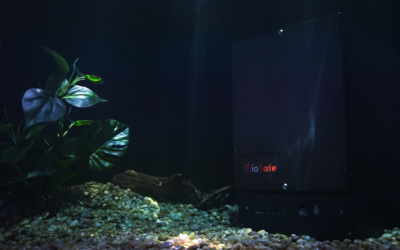How Big Should My Hard Drive Be?
Throughout my life, I’ve been using and building my own computers. I’ve used them for various reasons: School work, video and image storage, playing games, browsing, etc. During this time, I’ve upgraded the size of my hard drive multiple times to accommodate for the way I was using and storing data. That being said, I’d like to share my experience of hard drive storage usage based off the kind of data that might be stored on it.
At one point or another, I’ve been a student, gamer, office worker, (personal) video editor, and picture-taker. Every “profession” had one thing in common: I stored data on a hard drive. No matter which one I chose, maintaining all that data on one system required enough space. In my case, I’m currently using 2 terabytes of maximum capacity. Granted, I don’t use EVERY bit of possible space on my drive, but it covers all of my bases.
First Ask Yourself: What Will My Hard Drive Store?
You might not be like me. Maybe you just need a simple way to figure out your hard drive size for your home office as you continue working from home. Or you need a hard drive for more professional use, like photography, video editing, creating music, or any other kind of artistic, data-heavy use.
Maybe you need to store the highest quality or quantity of images and videos. Or, if you are like me, you unpredictably pick up new hobbies and store all sorts of miscellaneous data on top of all your anticipated data. No matter what, there’s a decision to be made: The size of your hard drive.
I frequently have conversations with photographers that store a lot of the same data – in this case, images – on their external hard drives. They have conventional sizes of drives, but they archive these drives every year or so. Depending on your situation, the question changes from: “How big should my hard drive be?” to “How OFTEN do I want to archive a drive dedicated to specific types of data?” But that’s a discussion for another time.
For working from home and basic home office use, saving only files like Word docs, PowerPoints, spreadsheets, MP3s, images, etc. means you can go as low as 500GB. You might be able to go lower, but I wouldn’t go below this in order to leave some cushion for any unprecedented files or programs that may take up additional space. You also don’t want to push filling up the cap of your hard drive, as it will put more stress on your drive.
Note that this not applicable to solid-state drives (SSDs) since they do not have the same mechanical nature that causes hard drives to be stressed with increased data.
Now that we’ve got that out of the way, let’s break down exactly how much storage you might need on a hard drive.
Hard Drive Size by Usage
Light Usage (500GB – 1TB)
Typically for:
- Home office
Types of files:
- Documents
- Small images (3-5MB)
- Non-professional audio (5MB)
Moderate Usage (1TB – 4TB)
Typically for:
- Photographers
- Videographers
- Video editors
- Music producers
- Game designers
- Or anybody looking to make more use than a simple, uncommonly used home office
Types of files:
- Photography (5MB)
- Professional/high-quality audio (15 – 20MB)
- SD videos (~1.5GB per 2 hours)
- Small games (300MB – 4GB)
Heavy Usage (4TB+)
Typically for:
- Content creators
- Large collections of files
- Combinations of any above-mentioned usage
Files:
- HD movies (6-8GB)
- Large games (10+ GB)
Picking a drive size depends not just on what type of data you want to store, but also how much. Maybe you want to delete it off your internal drive and store it on an external drive. For a general backup of your entire PC, I’d recommend getting a tier higher than what’s recommended above (i.e, if you have light usage, get a medium usage-ranged drive for external local backup).
Note that 500GB is about half of 1TB, so to figure out how many files will fit on 500GB, halve the number of files that will fit on 1TB of storage.
Where to Start
If you want a hard drive for general use, your safest bet is getting a 500GB – 1TB hard drive for storing files. That should be enough to cover most standard file storage needs. The price difference between a 500GB and 1TB is typically negligible, so I personally recommend going for a 1TB drive. This will cover the bases in case things start escalating and you’re using more space than you originally anticipated (like I did).
If you expect pretty intense and highly dedicated usage, you can explore larger drives, starting with 2TB.
Also, remember – no matter how large your hard drive is – to back up your data in case of hard drive failure. Whether you’re getting an internal replacement, an external solution, or an entirely new system, I hope this helps get you on the right path to picking the perfect hard drive for you.

Scot Gulley
Customer Support Technician
Helping CDSG customers across the globe. Recent IT grad, pancake lover, and basketball enthusiast.
Related Blog Posts
Remote Tech Support for a Day: A World Backup Day Story
I recently played remote tech support for someone whose laptop hung up during a software installation. It seemed that the...
ioSafe 1019+ NAS vs. 1517 NAS: What’s the Difference?
Lately, I've been asked quite often about the key differentiators between the legacy ioSafe 1517 NAS and the newer 1019+...
How Long Does an External Hard Drive Really Last?
As a Customer Support Technician for hard drive tool technologies, I’m often approached by customers asking: “How long will...



